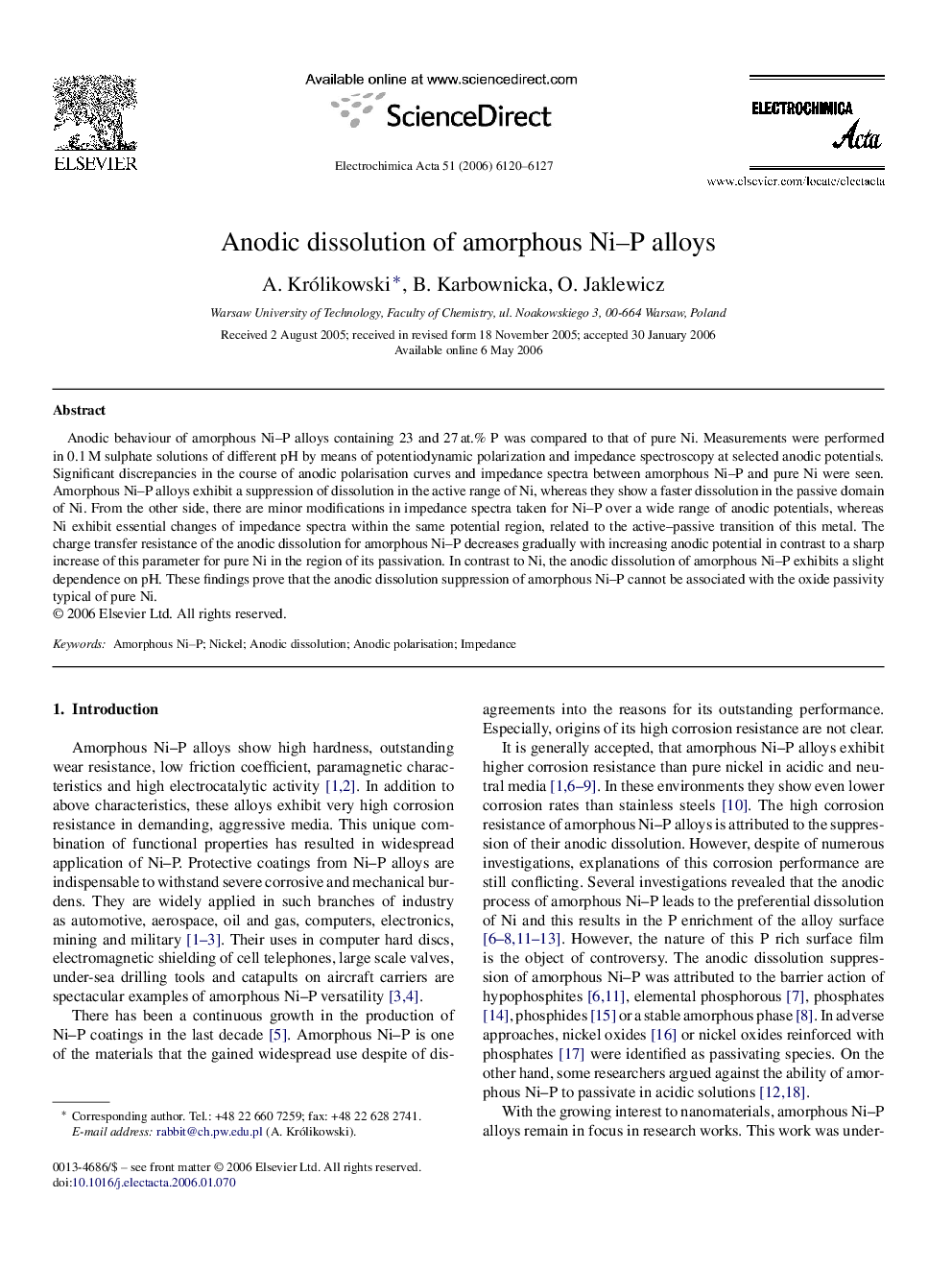| Article ID | Journal | Published Year | Pages | File Type |
|---|---|---|---|---|
| 195465 | Electrochimica Acta | 2006 | 8 Pages |
Anodic behaviour of amorphous Ni–P alloys containing 23 and 27 at.% P was compared to that of pure Ni. Measurements were performed in 0.1 M sulphate solutions of different pH by means of potentiodynamic polarization and impedance spectroscopy at selected anodic potentials. Significant discrepancies in the course of anodic polarisation curves and impedance spectra between amorphous Ni–P and pure Ni were seen. Amorphous Ni–P alloys exhibit a suppression of dissolution in the active range of Ni, whereas they show a faster dissolution in the passive domain of Ni. From the other side, there are minor modifications in impedance spectra taken for Ni–P over a wide range of anodic potentials, whereas Ni exhibit essential changes of impedance spectra within the same potential region, related to the active–passive transition of this metal. The charge transfer resistance of the anodic dissolution for amorphous Ni–P decreases gradually with increasing anodic potential in contrast to a sharp increase of this parameter for pure Ni in the region of its passivation. In contrast to Ni, the anodic dissolution of amorphous Ni–P exhibits a slight dependence on pH. These findings prove that the anodic dissolution suppression of amorphous Ni–P cannot be associated with the oxide passivity typical of pure Ni.
